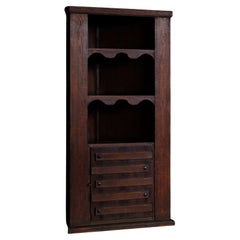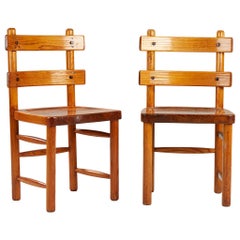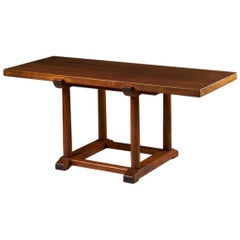Axel Einar Hjorth Sandhamn
Vintage 1930s Swedish Scandinavian Modern Corner Cupboards
Pine
Recent Sales
Vintage 1920s Swedish Scandinavian Modern Dining Room Chairs
Wrought Iron
Vintage 1920s Swedish Mid-Century Modern Console Tables
Pine
Mid-20th Century Swedish Mid-Century Modern Chairs
Iron
Vintage 1930s Swedish Scandinavian Modern Side Chairs
Wrought Iron
Vintage 1930s Swedish Scandinavian Modern Corner Cupboards
Steel
Early 20th Century Swedish Scandinavian Modern Lounge Chairs
Pine
Vintage 1930s Swedish Scandinavian Modern Lounge Chairs
Pine, Upholstery
People Also Browsed
Vintage 1930s French Rustic Chairs
Straw, Oak
21st Century and Contemporary British Organic Modern Wall Lights and Sco...
Plaster
2010s Mexican Post-Modern Side Tables
Onyx
Mid-20th Century Danish Scandinavian Modern Cabinets
Oak
Vintage 1960s French Mid-Century Modern Dining Room Chairs
Straw, Beech
Vintage 1920s Dutch Art Deco Magazine Racks and Stands
Macassar, Oak
21st Century and Contemporary French Mid-Century Modern Sofas
Stainless Steel
2010s Austrian Jugendstil Chandeliers and Pendants
Brass
2010s Belgian Modern Club Chairs
Linen
Early 20th Century French Mid-Century Modern Cabinets
Oak
2010s Belgian Modern Club Chairs
Linen
21st Century and Contemporary Italian Mid-Century Modern Table Lamps
Brass
Vintage 1970s Italian Side Tables
Oak
Antique 19th Century French Rustic Cabinets
Wood
21st Century and Contemporary Russian Brutalist Cupboards
Oak
Vintage 1930s Swedish Scandinavian Modern Coffee and Cocktail Tables
Pine
Axel Einar Hjorth for sale on 1stDibs
Swedish furniture designer Axel Einar Hjorth created tables, chairs, cabinets and other pieces that were as elegant as they were functional, and he frequently worked in references to a litany of inspirations including French Art Deco, Gustavian style and modernism. Ahead of his time, his style was refined and daringly simple.
Born in Krokek, Sweden, Hjorth grew up in a foster family and at 20 moved to Stockholm where he studied architecture and design at the Högre Konstindustriella Skolan (now the University of Arts, Crafts & Design). Although he dropped out when his foster father died, he went on to work for some of the largest furniture manufacturers in Sweden during the 1920s.
Hjorth’s work was featured in the 1923 Gothenburg Exhibition world’s fair, and he exhibited a birch and cherry cabinet in the 1927 “Swedish Contemporary Decorative Arts” exhibition at the Metropolitan Museum of Art in New York. His role as the head of the furniture department at Nordiska Kompaniet (NK), an upscale department store in Stockholm, from 1927 to 1938, further brought his designs to widespread acclaim, including pieces exhibited at the 1929 Barcelona International Exposition.
At the 1930 Stockholm Exhibition, an influential event in the emergence of functionalism in Swedish design, Hjorth exhibited a dozen room settings that featured examples of sportstugemöbler. These furniture lines were named for islands in Sweden’s archipelago — Utö, Blidö and Torö — with designs intended for cabins and vacation homes. The use of solid Swedish pine in these pieces revealed a love of traditional rustic furniture while the simple forms boldly looked to the future. He also brought his eclectic influences to armchairs formed from tubular metal, blocky case pieces made from birch and upholstered sofas with neoclassical details, each exuberantly mixing form and function.
Find vintage Axel Einar Hjorth furniture today on 1stDibs.


